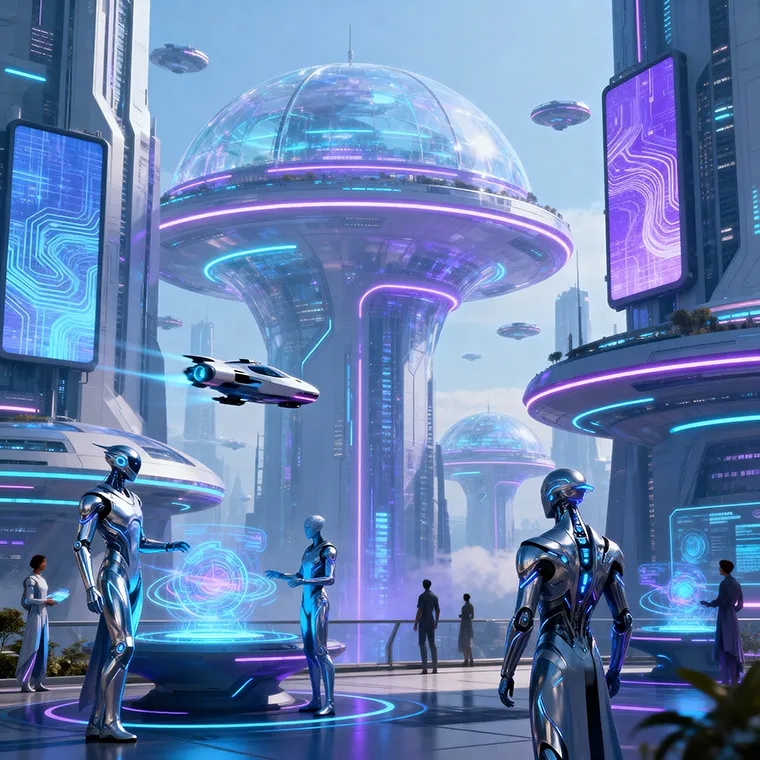Why the Moon? Human survival!
by Lifeboat Foundation Scientific Advisory Board member Robert Shapiro.
The most compelling reason for establishing a base on the Moon is to insure the future of humanity on Earth.
NASA wants to return humans to the Moon. Those of us who are middle-aged or older may recall that we have been there before. I can conjure up images of blurred figures in spacesuits jumping about on my black-and white 12-inch television screen. This time the plan, the Vision for Space Exploration, calls for the construction of a permanently-staffed lunar base. The cost has not been presented, but outside estimates have placed at it a few hundred billion dollars. This idea deserves praise, but the reasons provided for it have provoked the opposite reaction.
NASA presented a justification for this expenditure on its web site late last year. After consulting with over 1,000 individuals and 13 international space agencies, NASA produced six general themes, which have already been discussed and criticized in The Space Review. (See Moonbase why, December 11, 2006 and Just how full of opportunity is the Moon?, February 12, 2007.) I shall not repeat this discussion, but I can illustrate it with an example from one of NASA’s themes: scientific knowledge.
On a 30-second video that accompanies the NASA presentation, Laurie Leshin of the Goddard Space Flight Center explains that “studying lunar rocks and craters helps us understand life right here on Earth”. These goals are admirable, but is the lunar approach cost-effective? Will the study of lunar rocks and craters really tell us more about life here than several thousand separate projects at the National Institutes of Health? The majority of the science community does not agree. For example, a critical editorial in Chemical and Engineering News (February 5, 2007) was titled NASA’s Bad Idea and Nature (February 1, 2007) commented “science does not come close to offering a justification.”
The public media have shown a comparable disenchantment. For example, an editorial in the Los Angeles Times carried the blunt message “Don’t colonize the moon.” They felt that robotic exploration would harvest the same results at a much reduced cost. Other observers have presented an even simpler alternative: Why go at all? The money could be better spent on improvements at home. Science writer Dennis Overbye pointed out in the New York Times that “the moonbase could disappear like raindrops in the desert during the four presidential administrations and nine Congresses to come between now and 2024.” That year was proposed as a target for permanent lunar habitation.
I am not writing here to add my voice to the chorus of Moon-bashers, but to express my astonishment that NASA, and most supporters of space, have overlooked the one goal that, even if taken alone, would justify the massive cost of a permanent lunar base: insuring the survival of our species, and of the civilization that sustains us.

We must insure civilization.
Each year I insure my home for perhaps one percent of its value, and use a smaller amount to rent a safe deposit box to store valuable documents. What value do we place on our entire scientific, medical, and technical literature, together with our literary, artistic, and musical heritage? To raise the stakes, let me add the value of our own lives and those of all of our unborn descendents. This possibility was described eloquently more than two decades ago by Jonathan Schell in his anti-nuclear was treatise The Fate of the Earth. In his words: “But although the untimely death of everyone in the world would in itself constitute an unimaginably huge loss, it would bring with it a separate, distinct loss that would be in a sense even huger-the cancellation of all future generations of human beings.”
Of course, we have been hearing predictions of Doomsday for years, and we are still here. According to geologists, the eruption of Mt. Toba in Indonesia 71,000 years ago darkened the sky for years. The event caused killed much of plant life on the planet. The famine that resulted caused a severe drop in the human population of that time. The Black Death of the 14th century killed perhaps one-third of the population of Europe and the great flu epidemic of 1918 claimed an estimated 40 million victims. Despite these disasters, and others such as global wars, humanity has muddled through and even prospered. Why should things be different now? The answer is simple. Our prospects have worsened because we have come to a unique place in human history.

Human disaster
Suppose we wanted to conjure up a recipe for human disaster. Here is my suggestion about steps that we might take:
(1) Let the population swell up to seven billion or more. Then we will need vast and complex systems to ensure the production of food, materials, and energy sources, as well as transportation to deliver the goods. By increasing our numbers, we will also increase the playing field in which new viruses can develop, increase pollution and the probability of dramatic climate change, and hasten the day when important natural resources are exhausted.
(2) Computerize the operation of the food, energy, and transportation systems, and store all of the instruction manuals and needed references within the computers. Similarly, place all of our scientific, technical and medical knowledge within computers. Make the computers more and more complicated, so that only a handful of experts are prepared to deal with a massive failure.
(3) Arrange to have the computers, and most other functions of society, dependent upon the operations of an intricate power grid that is subject to massive and unexplained failure. We have already had a rehearsal of such an event. For example, on August 14, 2003, 50 million people in the northeast United States were deprived of power for many hours. The main cause of the blackout, according to the task force charged with its investigation, was the failure of an Ohio power company to trim trees in part of its service area. In September of that year, a similar blackout shut off power to almost all of Italy and part of Switzerland. Unintended causes might of course be eclipsed by the deliberate actions of terrorists. Gregory McNeal estimated in the New York Times that “a coordinated attack on four or five critical sites could send much of the nation into darkness for weeks.”
(4) Streamline the production of nuclear and biological weapons so that they become available not only to most heads of state, but also to groups of religious zealots and of extreme nationalists. Encourage both the exchange of information about such weapons, and their availability on the international black market. Individuals who are technically competent but mentally unbalanced will then also have access to such weapons, enriching their current arsenal of computer viruses, bombs, and hijacked airplanes.
All of the above events have already taken place or are likely to occur in the near future. We may also expect that single disasters may trigger a cascade of others. For example, my local power company has circulated a card advising its customers to assemble “at least a three-day supply of water and non-perishable food” as part of a “family emergency preparedness plan”. But what would we do, in urban centers, when that supply was exhausted but power and transportation had not been restored? Looting of stores and warehouses might be expected, together with an attempt by residents to flee to less populated areas where conditions might be better. Famine and civic disorder will inevitably produce casualties; unburied bodies could then lead to disease epidemics.
Considerations of this type led Dr. Martin Rees, Professor of Cosmology at Cambridge and President of the Royal Society, to publish a gloomy estimate. In his 2003 book, Our Final Hour, he gave civilization only a 50 percent chance of surviving until the year 2100.
When we face a brand new situation, such probabilities are impossible to calculate. Countermeasures against each individual threat can of course be taken, but we would also be prudent to back up our civilization and our species. We need to place a self-sufficient fragment of society out of harm’s way, which for practical purposes means off the Earth. A buffer of empty space would protect that sanctuary from virtually all of the catastrophes named above.
Physicist Stephen Hawking, and a number of others, have called for humanity to spread out to distant planets of our Solar System. But there is no need to go so far to protect ourselves. After a few decades — centuries at worst — ash will settle, radioactive materials will decay, and viruses will perish. Earth will once again become the best home for humanity in the Solar System. Return would be easiest if a safe sanctuary were nearby. In the more probable instance that only a limited disaster took place, that nearby sanctuary could also play a valuable role in restoring lost data and cultural materials, and coordinating the recovery. And of course, construction of the rescue base will be much easier if it is only days, rather than months or years, away.
We do not have to build the base from scratch, in an environment of emptiness, as we are attempting to do with the space station. A suitable platform has been orbiting our planet ever since its formation. On most clear nights, we need only look up to see it. If I employ the same arithmetic that I use when I insure my home, the cost of the lunar base can easily be justified.
My house has not burned down, and the disasters I described may not occur. A host of other benefits, described on the NASA web site, will result from human presence on the Moon. But we do not need to invoke them to provide reasons for our investment.